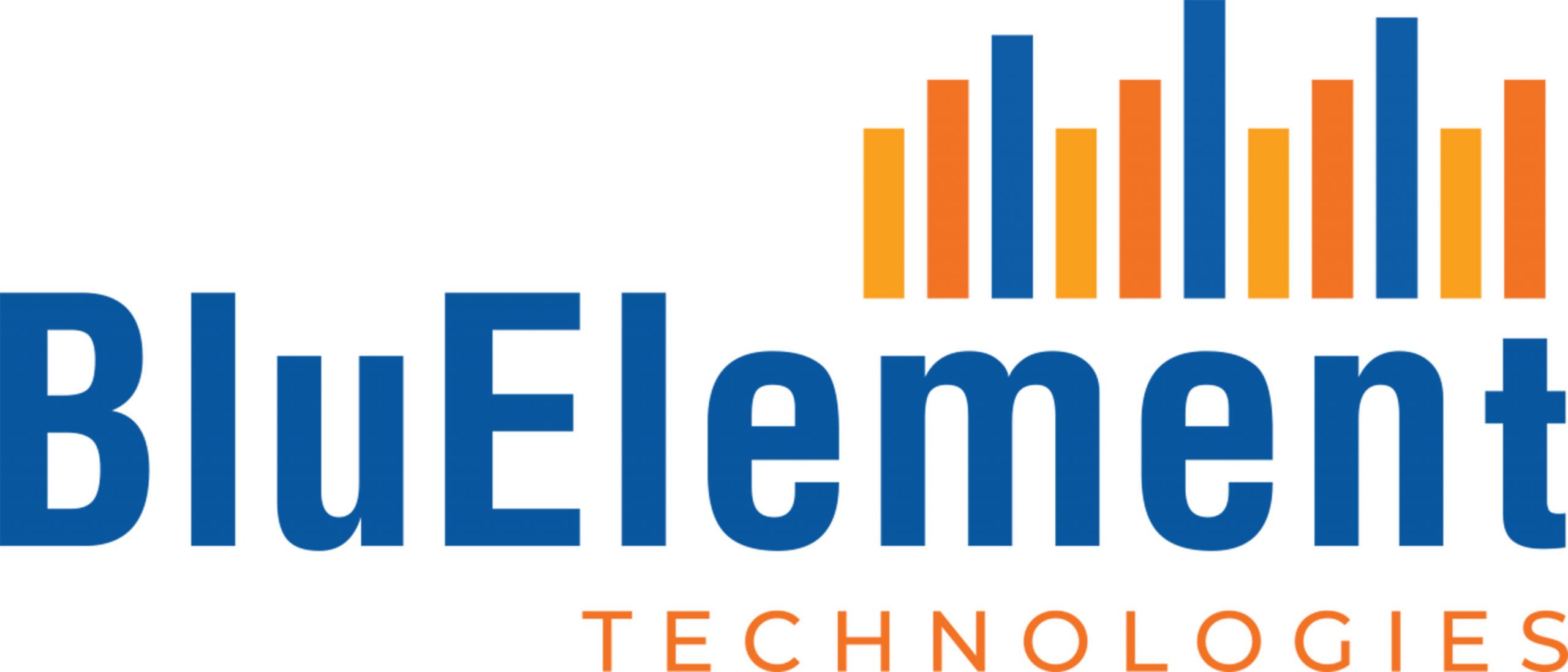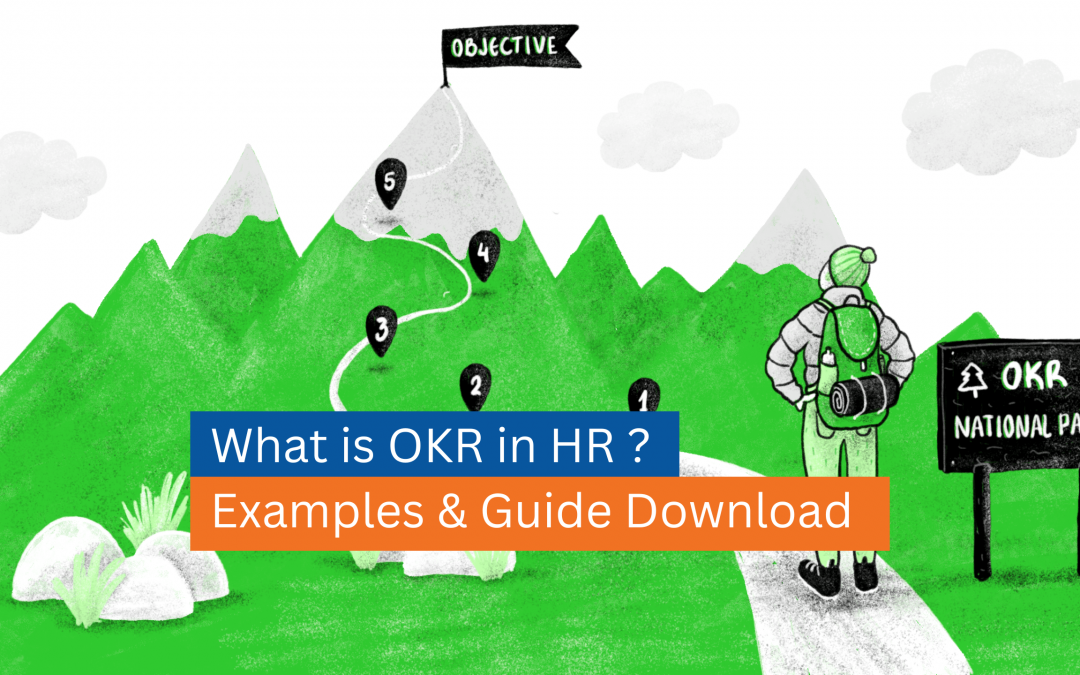In today’s dynamic business landscape, organizations are constantly seeking effective methods to align their employees’ efforts with strategic objectives. One popular approach in human resources (HR) is the use of OKRs (Objectives and Key Results), which is a goal-setting framework. OKRs in HR have gained significant traction, and it is essential to understand what OKR is in HR. This article aims to provide a comprehensive guide to OKRs in HR, exploring their definition, implementation, examples, benefits, challenges, and best practices.
What is OKR in HR ?(Objective and Key Results)
OKR stands for Objectives and Key Results. It is a goal setting framework that helps organizations and individuals define and track their objectives and measure their progress towards achieving them. OKRs are typically set for a specific period, such as a quarter or a year, and they are designed to align everyone in the organization towards a common set of goals. The framework consists of three main components: objectives, key results, and initiatives.
What is an Objective?
Objectives are the overarching goals that an individual or organization wants to achieve. They should be ambitious, inspiring, and provide a clear direction.
What are Key Results?
Key Results are measurable outcomes that define how progress towards the objectives will be tracked and evaluated. They are specific, time-bound, and quantifiable, enabling objective assessment of the degree to which the objectives are being met.
What is an Initiative?
Initiatives are all the projects and tasks that will help you achieve your key results.
Also read: 10 Best Onboarding Email Examples for Inspiration
Importance of OKR in HR
OKRs play a crucial role in HR by providing a structured and transparent approach to goal setting. They enable HR departments to align their activities with the strategic goals of the organization and drive employee engagement and performance. OKRs also foster a culture of accountability and continuous improvement, as they encourage regular tracking, evaluation, and feedback.
Implementing OKR in HR
- Assigning an OKR Ambassador
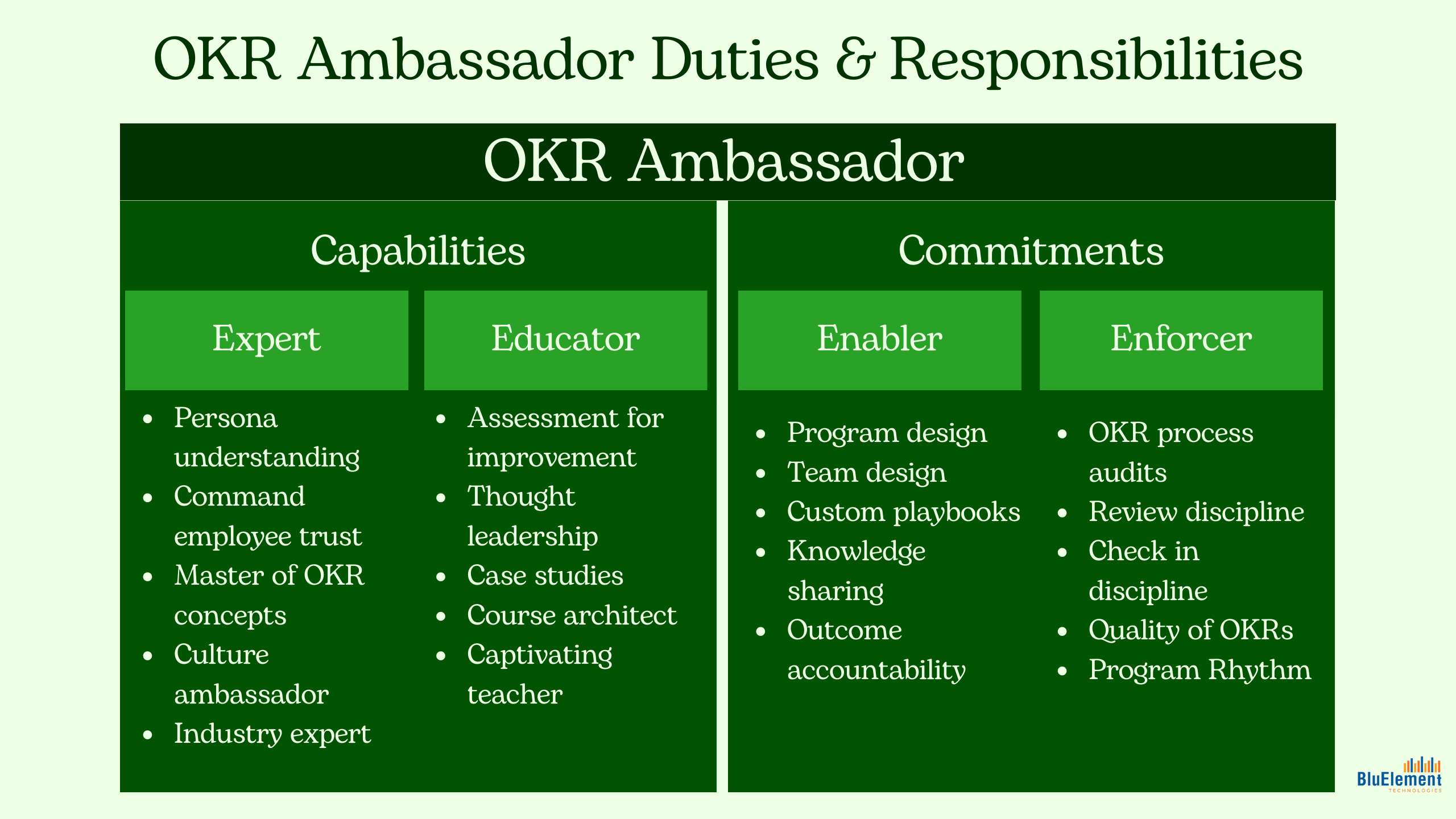
An OKR ambassador is an individual who takes on a role to promote and advocate for the implementation and adoption of the OKR (Objectives and Key Results) framework within an organization. The OKR ambassador acts as a champion for OKRs, supporting and guiding teams and individuals in understanding and effectively using the framework to set and achieve their goals.
- Align OKRs with Organizational Strategy
To effectively implement OKRs in HR, it is essential to start by identifying the overall organizational strategy and goals. This involves gaining a comprehensive understanding of the organization’s mission, vision, and strategic priorities.
By aligning HR with the broader objectives, HR professionals can determine how their department can contribute to the organization’s success. This can be achieved by analyzing the specific needs and challenges of the organization and identifying key focus areas where HR can make a significant impact.
For example, HR may prioritize initiatives related to talent acquisition, employee development, diversity and inclusion, or organizational culture. By identifying these key focus areas, HR can set objectives that directly align with the organization’s strategic goals, ensuring that HR’s efforts are well-aligned and contribute to the overall success of the organization.
- Define Clear and Inspiring Objectives
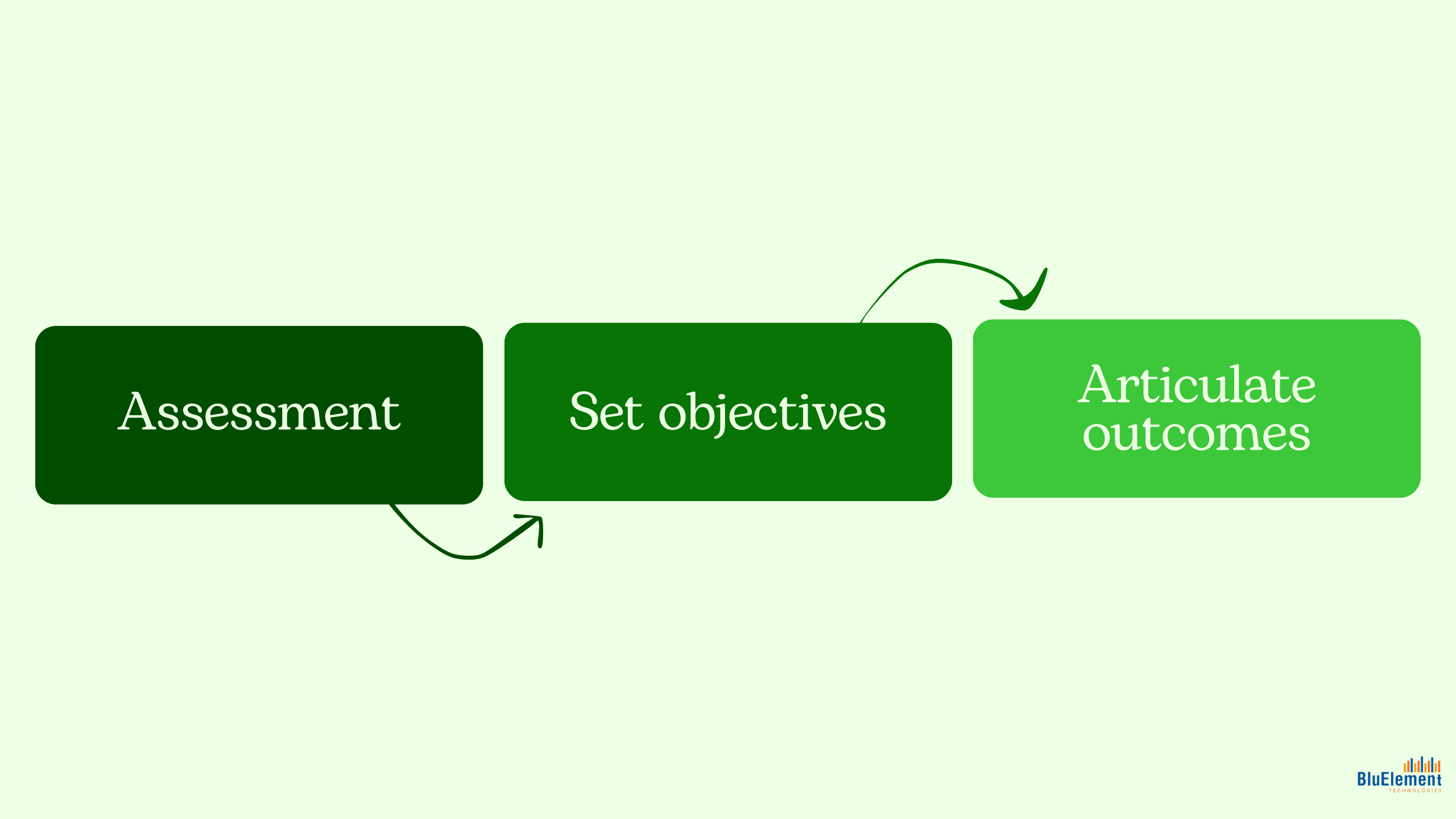
To implement OKRs in HR, it is crucial to determine the specific areas or aspects within the HR function that require improvement or alignment with the organizational strategy. This can involve assessing HR processes, systems, or practices that may need refinement or realignment to better support the organization’s goals. By identifying these areas, HR can focus its efforts on addressing the critical needs and gaps, ensuring that the objectives set are relevant and impactful.
Once the areas for improvement or alignment have been identified, it is essential to set clear and inspiring HR objectives that align with the overall organizational goals. HR objectives should be formulated in a way that clearly articulates the desired outcomes and contributes to the success of the organization. These objectives should be meaningful and inspiring, motivating HR teams to work towards achieving them.
While setting HR objectives, it is important to strike a balance between ambition and achievability. HR objectives should be ambitious enough to push HR teams beyond their comfort zones and encourage continuous improvement. At the same time, they should be achievable to maintain motivation and prevent a sense of overwhelming challenges. By setting objectives that are appropriately challenging yet attainable, HR teams are more likely to stay engaged and strive for excellence in their work, driving positive outcomes for the organization.
Also read: Onboarding Checklist for New Employees: Remote & In-person
- Establish Measurable Key Results

Define key results that are specific, measurable, and time-bound. This means clearly articulating what needs to be achieved, establishing metrics to measure progress, and setting a deadline for completion. Specificity ensures clarity, measurability provides objective assessment, and time-bound nature adds a sense of urgency.
Ensure that key results are quantifiable and provide a clear indication of success or achievement. By setting numeric targets or milestones, HR teams can easily track their progress and determine whether they have met their goals. This clarity allows for focused efforts and better alignment.
Strike the right balance between challenging and attainable key results. Setting ambitious goals encourages HR teams to push their limits and innovate. However, it’s important to ensure that the goals are within reach to maintain motivation and prevent discouragement. The right balance motivates HR professionals to strive for excellence and continuously improve their performance.
- Track Progress and Provide Feedback
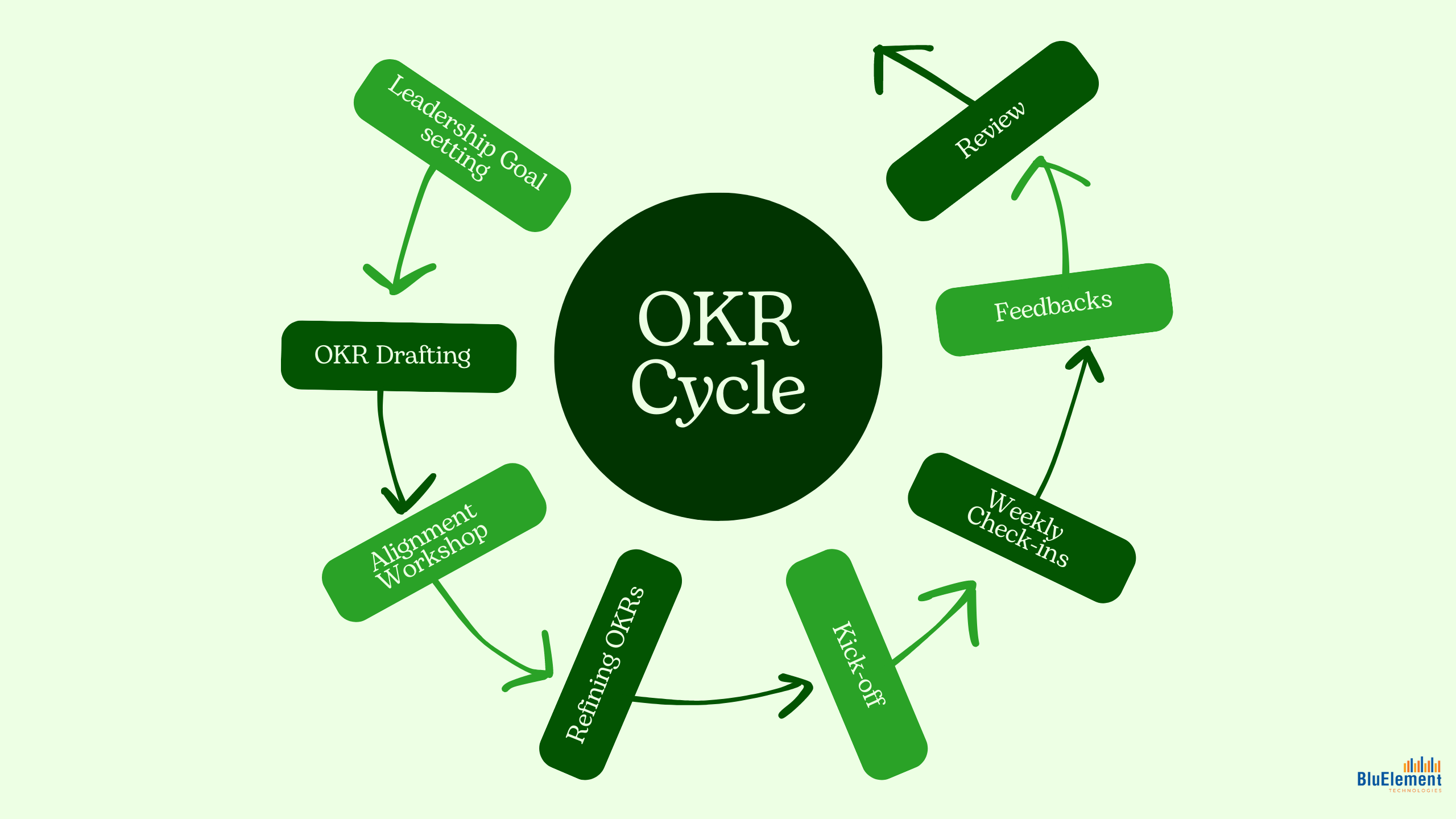
To implement OKRs effectively, establish a regular cadence for tracking progress. This involves consistent monitoring and evaluation to identify deviations and obstacles promptly. Conduct periodic check-ins to review OKR status, provide feedback, and make adjustments. These check-ins ensure alignment, address challenges, and optimize efforts. Encourage open communication and collaboration to share insights, overcome obstacles, and enhance problem-solving. Emphasizing communication creates a positive work culture that maximizes OKR success.
- Foster Accountability and Recognition
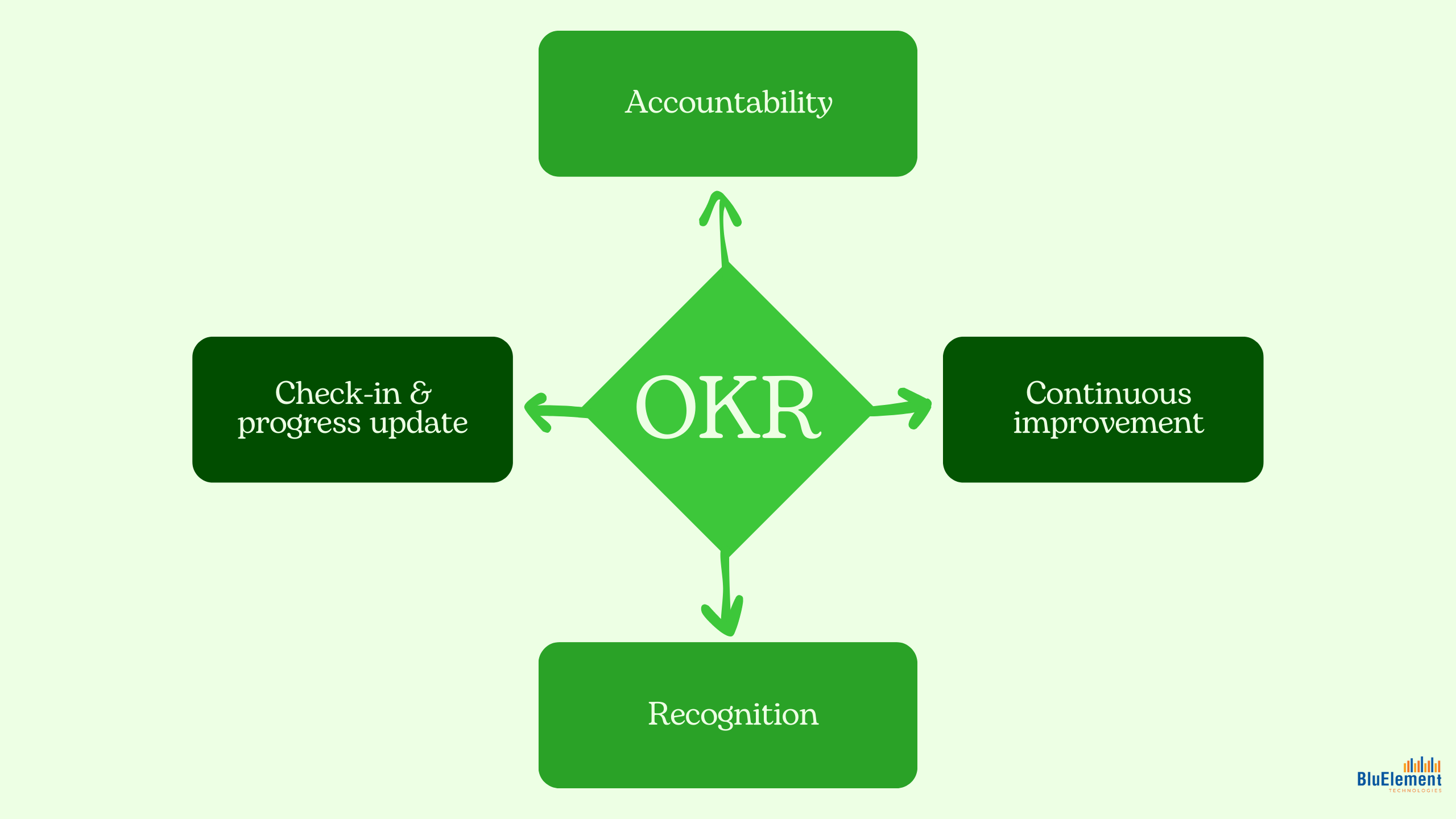
To drive successful implementation of OKRs in HR, it is important to emphasize accountability at all levels, ensuring individuals and teams take ownership of their OKRs.
Recognizing and celebrating achievements and progress towards HR objectives and key results boosts motivation and engagement. Additionally, fostering a culture of continuous learning and improvement within the HR department enhances knowledge and skills, promotes innovation, and aligns practices with evolving organizational needs. By integrating these practices, HR teams can maximize their impact and contribute to overall organizational success.
- Evaluate and Iterate
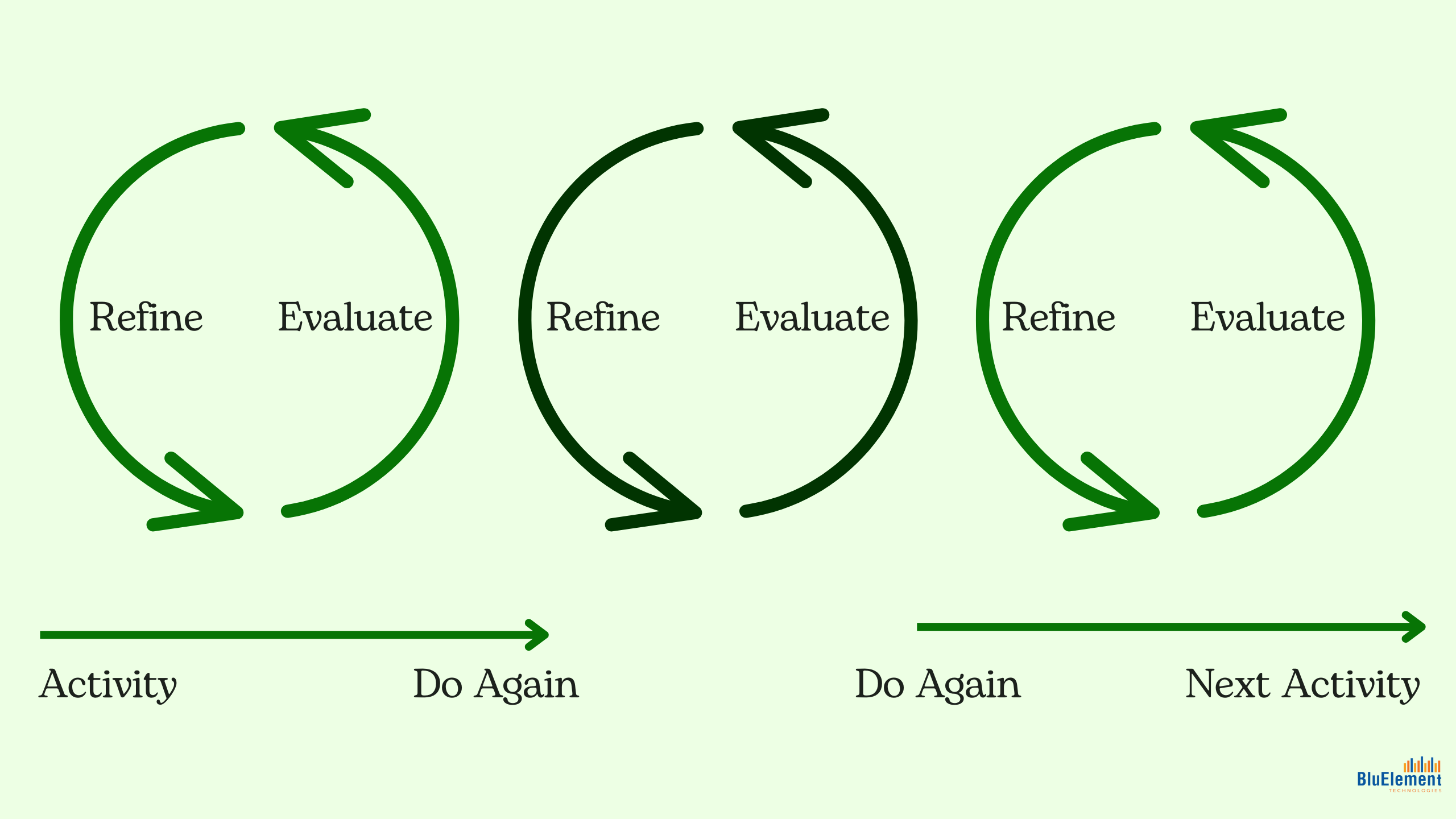
At the conclusion of each OKR cycle, it is essential to conduct a comprehensive evaluation of the HR OKRs to gauge their overall effectiveness. This evaluation involves assessing the areas of success, identifying the challenges encountered, and extracting valuable lessons learned from the process.
By analyzing these insights, organizations can refine their OKR methodology and enhance the setting and execution of future HR OKRs. This iterative approach to evaluation and improvement ensures continuous growth and optimization, allowing HR teams to align their efforts more effectively with organizational objectives and drive greater success in the future.
Also read: Investing in Your Team: Importance of Effective Onboarding Strategies
Challenges in Implementing OKR in HR
- Resistance to Change
Introducing OKRs in HR may face resistance from employees and managers who are accustomed to traditional goal-setting approaches. Resistance can be mitigated through effective communication, training, and showcasing the benefits of OKRs.
- Lack of Alignment
One of the challenges in implementing OKRs is ensuring alignment between different departments and teams. Lack of alignment can lead to conflicting priorities and disjointed efforts. Regular communication and coordination are necessary to overcome this challenge.
- Unrealistic Goal Setting
Setting overly ambitious or unrealistic goals can demotivate employees and hinder performance. It is essential to strike a balance between challenging objectives and attainable key results. Regular monitoring and feedback help in recalibrating goals if needed.
Best Practices for OKR Implementation in HR
- Clearly Communicate Objectives
Transparent communication is key to successful OKR implementation. HR professionals should clearly communicate the objectives, key results, and the rationale behind them to ensure everyone understands the organization’s priorities and how they contribute to them.
- Regularly Review and Update OKRs
OKRs should not be static; they need to be reviewed and updated regularly. HR professionals should track progress, provide feedback, and make adjustments if required. Regular check-ins and evaluations keep employees engaged and accountable.
- Provide Continuous Feedback and Support
To maximize the impact of OKRs, HR professionals should provide continuous feedback and support to employees. Regular coaching sessions, performance discussions, and recognition of achievements help in driving performance and engagement.
4 Inspiring HR OKRs
Let’s look at some examples on how you can define OKRs for your HR department.
Example 1: Foster a Culture of Continuous Learning & Development
Objective:
Establish and promote a comprehensive learning and development program that empowers employees to acquire new skills, enhance their professional growth, and drive innovation within the organization.
Key Results:
- Increase the participation rate in training and development initiatives by X%.
- Launch a mentorship program to facilitate knowledge sharing and career development for X number of employees.
- Implement a performance management system that includes regular feedback and personalized development plans for all employees.
Example 2: Enhance Employee Engagement and Satisfaction
Objective:
Create a positive and engaging work environment that fosters high employee satisfaction and enhances overall productivity.
Key Results:
- Conduct an employee engagement survey and achieve a satisfaction score of X or above.
- Implement initiatives to improve work-life balance and well-being, resulting in a decrease in employee turnover by X%.
- Develop and launch an employee recognition program to acknowledge and appreciate outstanding contributions, resulting in an increase in employee recognition scores by X%.
Example 3: Build a Diverse and Inclusive Workplace
Objective:
Establish and promote a diverse and inclusive workplace that values and celebrates individual differences, fostering innovation, creativity, and collaboration.
Key Results:
- Increase diversity in leadership positions by X% within the next year.
- Develop and implement diversity training programs for all employees, resulting in an increase in awareness and inclusive behaviors by X%.
- Establish partnerships with diverse professional organizations and universities to enhance diversity in recruitment and hiring, resulting in an increase in diverse hires by X%
Example 4: Streamline HR Processes and Systems
Objective:
Optimize HR processes and systems to improve efficiency, accuracy, and employee experience.
Key Results:
- Implement an automated onboarding process, resulting in a decrease in the time required for onboarding by X%.
- Enhance self-service capabilities for employees, resulting in a decrease in HRrelated inquiries by X%.
- Implement a unified HRIS (Human Resources Information System) to streamline data management and reporting, resulting in improved accuracy and timely access to HR information.
Conclusion
OKRs are a powerful tool for HR professionals to align their efforts with strategic objectives and drive organizational success. By implementing OKRs effectively, HR departments can enhance employee engagement, improve performance management, and foster a culture of continuous learning and development. However, successful OKR implementation requires clear communication, regular tracking, and addressing challenges along the way.
FAQs
Q1. What is the difference between OKR and KPI?
OKRs and KPIs (Key Performance Indicators) serve different purposes. OKRs focus on setting ambitious objectives and measurable key results, providing direction and alignment. KPIs, on the other hand, are specific metrics used to measure performance in a particular area. While OKRs are goal-oriented, KPIs are more focused on performance tracking.
Q2. Can OKRs be used for individual goal setting?
Yes, OKRs can be used for individual goal setting. Individual OKRs should align with departmental and organizational objectives and contribute to the overall success. Individual OKRs provide employees with a clear sense of direction and help them understand how their work impacts the bigger picture.
Q3. How often should OKRs be reviewed?
OKRs should be reviewed regularly to track progress and make adjustments if necessary. Typically, OKRs are reviewed on a quarterly basis. Regular check-ins allow for course correction, provide feedback, and ensure continuous alignment with changing business priorities.
Q4. Is OKR suitable for all types of organizations?
OKRs can be beneficial for a wide range of organizations, regardless of their size or industry. However, the level of implementation and the specific OKR framework may vary based on the organization’s unique needs and context.
Q5. Can OKR be applied to HR processes other than performance management?
Absolutely! OKRs can be applied to various HR processes beyond performance management. They can be utilized in areas such as employee engagement, talent acquisition, learning and development, diversity and inclusion initiatives, and many more. OKRs provide a structured approach to align HR efforts with strategic objectives in any HR domain.
Follow us on our Facebook, Instagram, and LinkedIn pages to stay updated with the latest articles, videos, announcements, and more.
